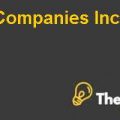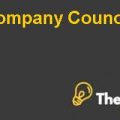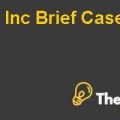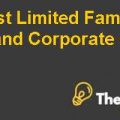
Introduction
One of the analysts is hired by Alpha plus Management for the purpose of analyzing the performance of the enterprise named as, Mary King, she has got a strong financial career and knows much about financial performance. The management decided to take services Mary in evaluating the performance of the two retail companies through. The retailers’ one is “Ahold” who is very famous in the Netherland and second is “Tesco PLC” which is situated in the United Kingdom. Mary knows the evaluating keys and where it has to respond.
On the basis of data given to Mary, she reviews their history, geographical area and their product & services offering. Based on the data the financial performance is better of Tesco as compare to Ahold because of its high revenue streams and less operating expenses. Ahold is the grocery store, having a large number of food items. They have also ready cooked meals which are essential for the attraction of customers and they have also openedto expand globally. On the other hand, Tesco is most successful grocery store in the entire London. It has self-made product, fresh food items, non-food items, electronic items, household appliances and other items. It also has international outlets for its easy service. People are more likely towards it store because they provide electronic means of commerce, whichhelps in reaching out every individuals across the world through internet. They have one more advantage of low cost selling which admire the customers.
Both of the companies have much more potential of the finance, but as per the comparison Tesco have more worth than ahead. Their returns are more efficient and also low cost margins.
Challenges faced
The main challenge for the Mary is to analyze the data on the DuPont Decomposition where it has compared the return on equity on the multiple ends of the selection. DuPont analysis will discuss in another heading with details. One more challenge that was to make a decision on the basis of ratio which is not so good because some organization have qualitative factors. The ratio is done with liquidity ratios and other financial ratio with respect to equity and assets
Ratio Analysis
Ratio analysis means the quantitative analysis of the financial information to report about the financial health of a company. Ratio analysis is done with the help of financial statements. These can be evaluated either individual or a combination of their performance. The analysis is used to evaluate numerous features of the company. They measure their liquidity, profit criteria and soundness of the financial. Ratio analysis is done with two trends that is horizontal trend and vertical trend. On the basis of trends, companies can improve their performance. In this case scenario, Mary is in the process of evaluation of two food retailers and which is discussed in different heading which are given below
- Currents Assets versus Total Current Asset
- Fixed Assets versus Total Assets
- Operating Ratios
- Turnover Ratios
- Liquidity Ratios
Currents Assets versus Total Current Asset
This type of analysis depicts that how much of the company’s assets are the Current Assets. The calculations have duly attached though excel files of Tesco PLC and Ahold, showing their results in the form of cash, short term investments, receivables, prepayments and inventory over their total current assets. From 2008 till 2011, Tesco has better performance in comparison of Ahold. The statement of financial position shows that out of the total current assets,there is 26%, 24%, 20% and 18% of cash from 2008 to 2011 respectively. Same short-term investment have 9%, 11%, 8% and 10% over current assets respectively. These are for Tesco PLC on the other hand,ahold have the cash position from 2008 is 56%, 53%, 50% and 47% respectively and short-term investments have 0.1% in every year. This shows that Ahold have much more strength in its cash and short term investments. Furthermore, in receivables and inventory ratios the Ahold have more worth as compare to Tesco PLC.
Fixed Assets versus Total Assets
Fixed Assets are also known as Non-current Assets of the company. The analysis is done in accordance with the actual portion of fixed assets in the total assets. This is basically showing the weight of non-current asset in the assets. Fixed Assets involve Property, Plant and equipment, Intangibles, long term investments. The analysis has shown that Ahold have many more assets as relates with Tesco PLC. This analysis is shown in the excel files. The ideal percentage is 50% in any organization of the non-current assets. Mary should analysis this factor also which is the reflecting indicators.
Operating Ratios
Operating Ratios work in the small case of the profit and loss statements. From these ratios it checks the efficiency of the organization with respect to net revenue. Operating ratios make sure the investor that the enterprise has a sound operating strength. Further the analysis shows that....................
This is just a sample partial case solution. Please place the order on the website to order your own originally done case solution.











